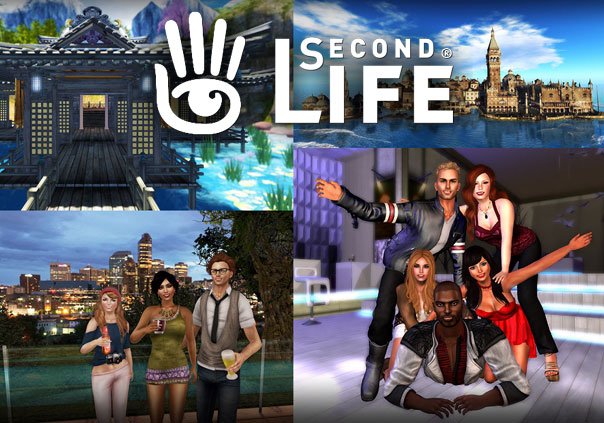Second Life is still alive, 16 years old and still has thousands of users

The world of technology changes periodically from fascination. Artificial intelligence is as striking this year as crypto coins last year, virtual reality in 2015 or 2016 or 3D images almost ten years ago. By the middle of the last decade online multiplayer games like World of Warcraft or Ultima Online were booming and several million people were already using the Internet to socialize with their friends and also with strangers. That's when Second Life emerged, a virtual world that aspired to become a revolution and attracted a lot of media attention with a mix of mysticism, big numbers and big promises. Disappeared years ago and eclipsed by many other things, has just turned 15 and still has activity.
This project of the Californian company Linden Lab launched on 23 June 2003 is still alive and still has thousands of active users. A month ago it celebrated its fifteenth anniversary with a series of special activities reminiscent of an MMORPG or online game: from virtual parties in which you were challenged to dress your avatar as in 2003 to "talk shows" interviewing members of the development team, "the Lindens". It has actually been fifteen years since the official launch of the project, but it had been in beta since March 2002, evolving from a kind of online game called Lindenworld.
This anniversary has not been a world event, but something isolated for the game community itself, something that contrasts with the high expectations that there were in their day for this project. With the echoes of Matrix movies still resonating, this proposal to have a double life on the net, completely different from your real life, received extensive media coverage, from the New York Times to the Wall Street Journal, through almost all the Spanish media. Other companies rushed to prepare their proposals for virtual worlds, from Chinese operators like HiPiHi to PlayStation with its Home platform for PS3. They all ended up closing. There was even a film in preparation, as well as rumours of a Microsoft purchase.
The current state of Second Life
It was never known exactly how many simultaneous users the service came to have, because public data has never been given. The intuition that many people tried it but few got hooked has been confirmed by Linden Labs, who after contacting them confirmed that there have been a total of 57 million Second Life accounts, but currently the community has 750,000 active users per month. Spanish is among the five most popular languages of the community (the first is English). This small niche in which the game has ended up is, of course, devoted to this online world.
According to Linden Labs, there are thousands of people who make a living creating content for Second Life, and there are a total of 5 million virtual items on your marketplace. Although without the popularity and expectations of 10 years ago, the economy of this online community seems to enjoy great strength: according to Ebbe Altberg, CEO of Linden Labs, in 2015 the gross domestic product of its virtual world was 500 million dollars (more than some small countries), and the game provided 60 million to those who had "virtual businesses" in it. That small percentage of 57 million accounts spend a lot of time in this world.
In the era when social networks and streaming platforms can turn real people into global phenomena with youtubers like El Rubius, professional players like Faker or streamers like Ninja becoming global celebrities, it's surprising that a project as opposite as Second Life, designed for people to live an alternative virtual life, is still going on and still active. Are you one of those 57 million people who tried it?
Congratulations @javiergil23! You received a personal award!
You can view your badges on your Steem Board and compare to others on the Steem Ranking
Vote for @Steemitboard as a witness to get one more award and increased upvotes!